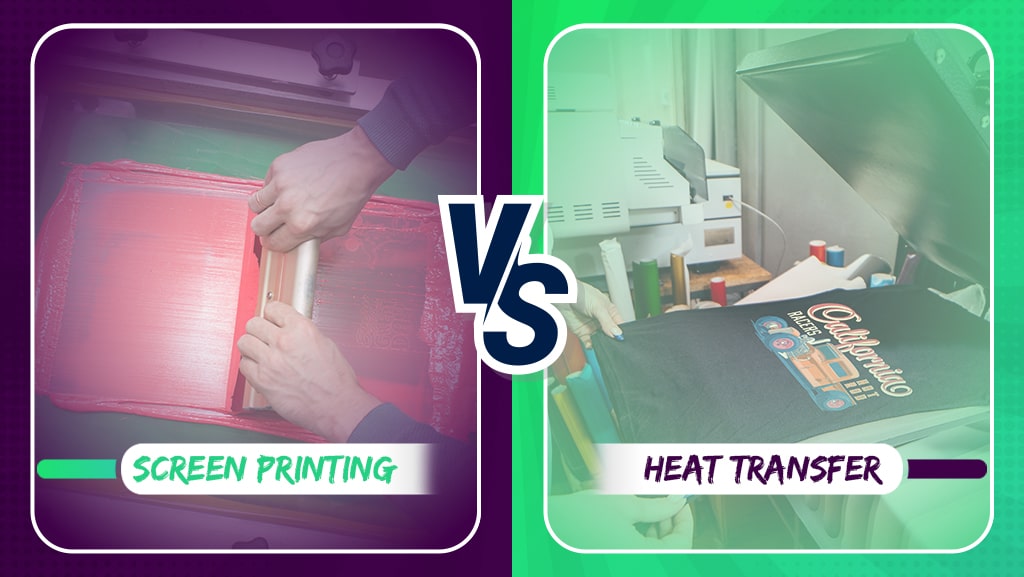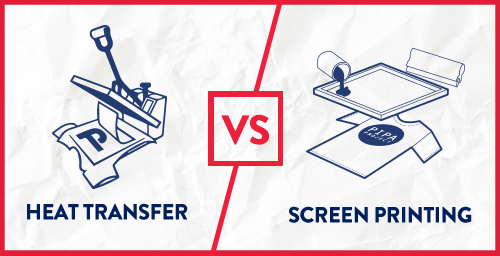See This Report on Tx Tees
See This Report on Tx Tees
Blog Article
Rumored Buzz on Tx Tees
Table of ContentsAbout Tx Tees6 Easy Facts About Tx Tees ShownGet This Report on Tx TeesNot known Factual Statements About Tx Tees Tx Tees Things To Know Before You BuyMore About Tx TeesNot known Factual Statements About Tx Tees
That brings your total to about $1,900 before tax and delivery. Build up other prices, like the variety of utilities it takes to run the store and the cost of ink and solution per design. embroidery shop. Take the print below for example. This is a one-color photo, so the expense of ink per tee shirt is around 20 cents.The emulsion needs to just be a few cents considering that you 'd only require to layer one screen for this task. Usually, printers try to make up to 45% profit on a print task.

With DTF, you can print a handful of t-shirts, or just one. Make use of the exact same calculator as the section over to determine how much revenue you would certainly use DTF transfers. Contrast the prices and profits to whichever method speaks finest to your arrangement and process. Both screen printing and DTF have their specific niches in the world.
Tx Tees for Dummies
The most effective way to understand? Ask about and see what printing shop like yours are doing. custom cap printing. Attempt both out and see which you like far better
When you're choosing what sort of printing technique to use for publishing your art work styles on your garments, it is essential that you recognize the distinctions between these two techniques so you can optimize outcomes while reducing expenses. Display printing is the most commonly made use of technique for printing designs on textiles.
DTG printing is additionally known as spot or straight to garment printing since it publishes just what is needed rather of making a screen as screen printers do. https://www.callupcontact.com/b/businessprofile/TX_Tees/8988532. Screen printing works by display filler squeegee screen printing ink screen mesh display, after that transferring the image to garment utilizing warmth and/or stress
The DTG printer makes use of unique dye-sublimation inks that are used right into a pre-designed image by a digital printing system. The inks become part of the material, permitting vivid colors and remarkable information. It's likewise known as area or straight to garment printing since it publishes only what is needed rather than making a display as display printers do.
More About Tx Tees
It's much quicker - you can print a fullcolor image in minutes, as opposed to hours for display printing. Second, there's no established time or expenses involved - you can publish any type of layout you like, without needing to create a screen first. Third, there's no waste - because display printers display print one design at once, they have to screen each shade separately.
The paper is really pricey and can just be utilized once. Once it's published on, it needs to be disposed of. - The first acquisition price is less than the in advance financial investment of DTG printers- You can print multi-color styles one display at a time as opposed to having to print each color separately like DTG printing.

Excitement About Tx Tees
Instead of utilizing display mesh as display printers do, dye sublimation printers make use of laser technology to move your images onto garments or paper. A heat process moves the color from its solid-state directly into the gas phase which in turn merges it onto textile substratums when they are rapidly warmed to high temperatures under high stress.
Sublimation printing is environmentally friendly. It makes use of much less water than screenprinting, and because it does not entail the use of hazardous solvents, it's secure for all types of clothing. The color sublimation inks are likewise odorless when treated, unlike screen printers that make use of unsafe chemicals throughout the screen printing process that leave behind an undesirable smell.
They likewise save money on costly equipment like exposure devices because color sublimation printers don't require a UV exposure device or a flash treatment oven that is generally made use of in screen printing (custom t-shirt design). What is direct to garment printing (DTG Printing)? DTG printing is a digital screenprinting procedure that prints straight onto textile utilizing specialized inkjet printers
The Basic Principles Of Tx Tees
DTG printing provides many benefits over conventional screenprinting, including the capability to print photographic top quality pictures, greater color vibrancy, and the capability to print layouts on darker materials. DTG printers function by warming the textile ink up until it becomes a gas. The gas then permeates the textile, bonding with the fibers to create a permanent print.

Display printers just prepare their screen then begin publishing till they lack item or ink.- There is a large range of knowledgeable display printers around the globe, which can be helpful for beginners. - It's a slower process - display printers frequently have to wait for the ink to dry before they can publish the next shade- Display printers need manual labor, so there's a higher discovering curve and it takes longer to produce you could try this out a top notch style- Screen printing isn't as precise as DTG printing, so you may get some "blood loss" of shades from one part of the image onto an additional if not done appropriately.
Everything about Tx Tees
Rather of using display mesh as display printers do, dye sublimation printers make use of laser technology to move your images onto garments or paper. A warm procedure transfers the color from its solid-state directly into the gas phase which consequently fuses it onto textile substratums when they are quickly heated up to heats under high pressure.
Sublimation printing is environment-friendly. It utilizes less water than screenprinting, and since it does not entail using dangerous solvents, it's secure for all kinds of garments. The dye sublimation inks are likewise odorless when healed, unlike display printers that utilize dangerous chemicals throughout the display printing procedure that leave an unpleasant smell.
They additionally conserve cash on expensive tools like direct exposure units given that color sublimation printers don't need a UV direct exposure device or a flash treatment stove that is usually used in screen printing. What is straight to garment printing (DTG Printing)? DTG printing is an electronic screenprinting procedure that publishes straight onto material using specialized inkjet printers.
The Main Principles Of Tx Tees
DTG printing uses several advantages over standard screenprinting, consisting of the capability to print photographic quality images, greater shade vibrancy, and the capability to print styles on darker fabrics. DTG printers work by warming the fabric ink till it develops into a gas. The gas after that penetrates the textile, bonding with the fibers to develop an irreversible print.
Report this page